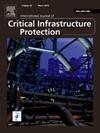欧盟关于关键基础设施保护的立法在波罗的海地区的法律实施绩效
IF 5.3
3区 工程技术
Q1 COMPUTER SCIENCE, INFORMATION SYSTEMS
International Journal of Critical Infrastructure Protection
Pub Date : 2025-06-03
DOI:10.1016/j.ijcip.2025.100781
引用次数: 0
摘要
无论是在俄罗斯侵略乌克兰的战争中,还是在针对欧盟领土的混合攻击不断扩散的情况下,关键的能源基础设施都已成为主要目标。欧盟对随之而来的跨国行动需求的回应之一是关于关键实体复原力的2022年cer指令。它的有效性现在取决于各国的执行情况,尽管其紧迫性无可争辩,但目前普遍存在拖延现象。为了开始揭示一些信息,本研究分析了该指令的前身(2008年eci指令)的法律实施,以评估关键基础设施保护特定领域实施研究学科的解释方法。该报告以波罗的海热点地区为重点,展示了具体国家的普遍预期如何不成立,以及现有国家框架与指令之间的根本不匹配如何有助于预测偏差。就eci指令而言,研究表明,个别国家存在明显的延迟和偏差,整个地区的协调也很有限。本文章由计算机程序翻译,如有差异,请以英文原文为准。
Transposing EU-legislation on critical infrastructure protection legal implementation performance in the Baltic Sea region
Both, in the Russian war of aggression against Ukraine and in the proliferation of hybrid attacks on EU territory, critical energy infrastructure has become a primary target. One EU- response to the ensuing need for transnational action consists in the CER-Directive of 2022 on the resilience of critical entities. Its effectiveness now hinges on national implementation, currently pervaded by delay despite the undisputable urgency. To begin to shed some light, this study analyses legal implementation of the directive’s predecessor (ECI-Directive of 2008) to assess explanatory approaches from the discipline of implementation studies in the particular field of critical infrastructure protection. Focusing on the hotspot Baltic Sea Region, it shows how country-specific generalized expectations do not hold and how fundamental misfit between pre-existing national frameworks and a directive can instead help predict deviation. For the ECI-Directive, the study shows significant delays and deviation for individual countries, as well as only limited harmonization across the region.
求助全文
通过发布文献求助,成功后即可免费获取论文全文。
去求助
来源期刊

International Journal of Critical Infrastructure Protection
COMPUTER SCIENCE, INFORMATION SYSTEMS-ENGINEERING, MULTIDISCIPLINARY
CiteScore
8.90
自引率
5.60%
发文量
46
审稿时长
>12 weeks
期刊介绍:
The International Journal of Critical Infrastructure Protection (IJCIP) was launched in 2008, with the primary aim of publishing scholarly papers of the highest quality in all areas of critical infrastructure protection. Of particular interest are articles that weave science, technology, law and policy to craft sophisticated yet practical solutions for securing assets in the various critical infrastructure sectors. These critical infrastructure sectors include: information technology, telecommunications, energy, banking and finance, transportation systems, chemicals, critical manufacturing, agriculture and food, defense industrial base, public health and health care, national monuments and icons, drinking water and water treatment systems, commercial facilities, dams, emergency services, nuclear reactors, materials and waste, postal and shipping, and government facilities. Protecting and ensuring the continuity of operation of critical infrastructure assets are vital to national security, public health and safety, economic vitality, and societal wellbeing.
The scope of the journal includes, but is not limited to:
1. Analysis of security challenges that are unique or common to the various infrastructure sectors.
2. Identification of core security principles and techniques that can be applied to critical infrastructure protection.
3. Elucidation of the dependencies and interdependencies existing between infrastructure sectors and techniques for mitigating the devastating effects of cascading failures.
4. Creation of sophisticated, yet practical, solutions, for critical infrastructure protection that involve mathematical, scientific and engineering techniques, economic and social science methods, and/or legal and public policy constructs.
 求助内容:
求助内容: 应助结果提醒方式:
应助结果提醒方式:


